Disclosure: This article contains affiliate links. We may earn a commission from purchases at no extra cost to you, which helps our travel content.
There's something primordial about standing on nearly a meter of transparent ice, gazing into the crystalline depths of the world's deepest lake. Che meraviglia! The first time I stepped onto Lake Baikal's frozen surface, I felt like I'd landed on another planet—one made of sapphire glass and diamond sculptures. As someone who's photographed across five continents, I can say with certainty: winter at Lake Baikal offers photographers one of the most extraordinary landscapes on Earth. The Siberian pearl transforms into a vast canvas of natural ice art—methane bubbles suspended like cosmic nebulae, turquoise cracks extending like lightning across the transparent surface, and shorelines decorated with ice grottoes that would make Michelangelo weep. This guide distills my experiences from two winter expeditions to this remote Siberian wonder, where temperatures plummet to -30°C (-22°F) and the photographic rewards are as vast as the lake itself.
Preparing for Siberia's Frozen Heart
When I tell friends I'm heading to Siberia in winter, they look at me as if I've announced plans to vacation on Mars. But with proper preparation, photographing Lake Baikal becomes an adventure rather than an endurance test.
First, let's talk gear protection. Your camera equipment will face extreme conditions that most manufacturers never fully test for. I learned this lesson the hard way during my first visit when my backup camera seized after just 20 minutes outside. Now I never travel to extreme cold destinations without my camera parka. This insulated cover has saved countless shoots by keeping my gear operational in temperatures that would otherwise kill batteries and freeze mechanisms.
Speaking of batteries—they're your most vulnerable resource. The cold drains them at alarming speeds, sometimes reducing life by 70%. I carry at least six fully-charged spares and keep them in interior pockets close to my body heat. Even with precautions, I've had fully-charged batteries show as empty when first inserted into my camera in -25°C weather, only to recover once warmed.
For your personal comfort, layering is non-negotiable. My system includes merino wool base layers, a down mid-layer, and an expedition-grade outer shell. Don't underestimate the importance of protecting extremities—frostbite can end your photography adventure quickly. I wear thin liner gloves under photographer-specific heat gloves that allow dexterity for camera controls while maintaining warmth.
Finally, consider your transportation carefully. Lake Baikal is enormous—636km long. Most photographers base themselves in either Listvyanka (accessible from Irkutsk) or on Olkhon Island. I've done both and recommend splitting your time between locations to capture the lake's diverse ice formations.

💡 Pro Tips
- Store camera batteries in inside pockets close to body heat
- Bring silica gel packets to combat condensation when moving between cold exteriors and warm interiors
- Pack chemical hand warmers to revive frozen batteries in emergencies
The Dance of Light on Ice
If there's one thing that separates amateur Baikal photos from breathtaking ones, it's understanding the unique interaction between light and ice. The lake's famous transparency creates photographic opportunities you'll find nowhere else on Earth.
During my second expedition, I dedicated three days solely to studying how sunlight transforms the ice at different times. What I discovered changed my approach entirely. Early morning (7-9 AM in winter) produces a soft blue luminescence as light penetrates the ice at low angles, illuminating methane bubbles and cracks from within. This ethereal glow disappears as the sun rises higher.
Midday presents different challenges and opportunities. The high sun can create harsh conditions, but it's ideal for photographing ice hummocks (torosy) along shorelines, as their crystalline structures catch and fracture light like natural prisms. I often use a polarizing filter during these hours to manage reflections and reveal deeper ice structures.
But the true magic happens during the golden hour, which lasts unusually long at these northern latitudes. The low-angled light turns the ice formations into sculptures of amber and gold, while the mountains on the eastern shore catch alpenglow. This is when I deploy my graduated ND filters to balance the bright sky with the ice foreground.
Night photography at Baikal deserves special mention. With minimal light pollution, the stars shine with remarkable clarity. On clear nights, I've captured the Milky Way reflecting in polished ice surfaces—an otherworldly mirror effect. For these shots, a sturdy tripod is essential, as is a remote shutter release to prevent vibration during long exposures.
Remember that Baikal's weather changes rapidly. I've experienced perfectly clear conditions transform into swirling snowstorms within an hour. This volatility can produce dramatic atmospheric effects worth capturing—just be prepared to protect your gear quickly.
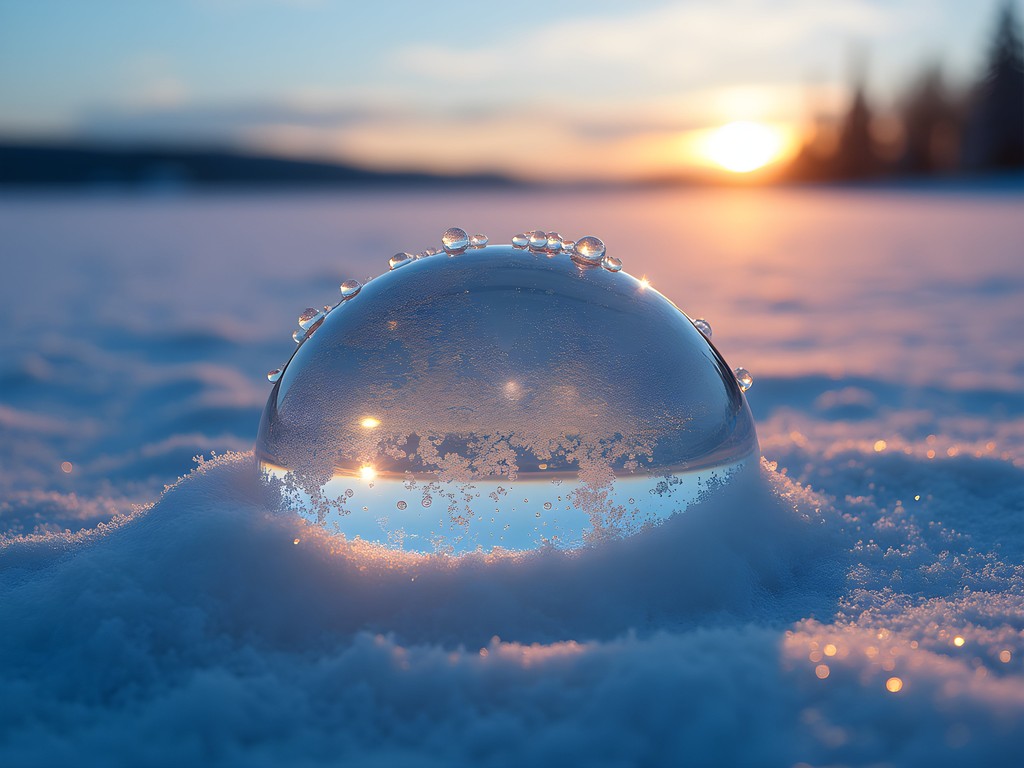
💡 Pro Tips
- Use a polarizing filter to control reflections and see deeper into the ice
- Plan shoots around the extended golden hour for warm light on ice formations
- Schedule at least one pre-dawn shoot to capture the unique blue hour illumination of ice bubbles
Prime Photography Locations Around the Lake
Lake Baikal's immensity means you'll need to make strategic choices about where to focus your photographic efforts. After two winter expeditions totaling nearly four weeks, I've identified several locations that consistently deliver spectacular images.
Olkhon Island serves as my favorite base of operations. The island's western coast features the iconic Shamanka Rock (Cape Burkhan)—a spiritual site for local Buryat people and possibly the most photographed location on Baikal. While beautiful, I encourage you to explore beyond this popular spot. The northern cape of Khoboy offers dramatic ice formations where lake ice collides with the shore, creating sculptural formations locals call sokui.
For capturing the lake's famous transparent ice with methane bubbles, the area between Khuzhir village and Uzury on Olkhon's eastern shore provides excellent opportunities. Here, the ice often forms with minimal snow cover, revealing the lake's crystal-clear depths. I spent three unforgettable mornings lying prone on the ice, my camera positioned to capture the constellation of bubbles beneath.
On the mainland, Listvyanka makes an accessible starting point, but the ice is often less photogenic due to higher tourist traffic. Instead, I recommend traveling north to the Severobaikalsk area, where the shoreline ice caves and grottoes create otherworldly foregrounds against the backdrop of snow-covered mountains.
The Circumbaikal Railway area south of Listvyanka offers a compelling juxtaposition of historic human engineering against natural ice formations. The old tunnels and bridges provide interesting framing elements for landscape compositions.
Don't overlook the small Tazheran steppes region, where limestone cliffs meet the lake. During my last visit, I captured some of my most dramatic images here—ice formations in the foreground with the golden grasslands and rocky outcroppings creating distinct middle-ground interest.
For serious landscape photographers, I highly recommend investing in a good travel tripod. The carbon fiber version saved me countless times on Baikal's ice, where stability is crucial yet weight is a concern when trekking across frozen expanses.
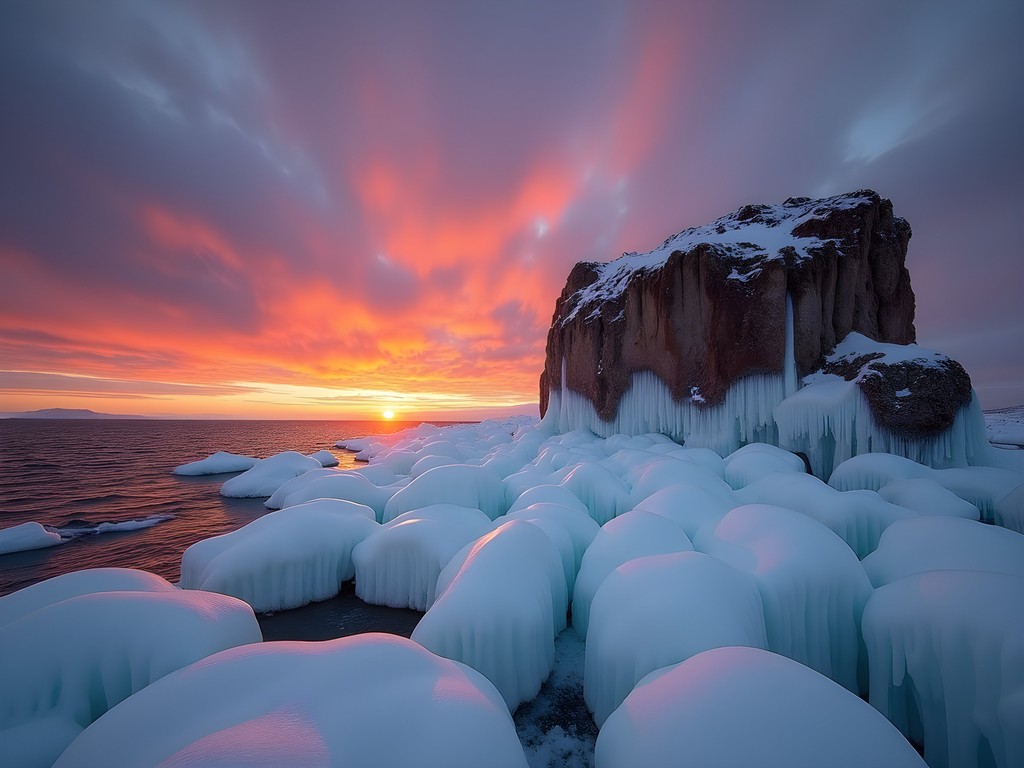
💡 Pro Tips
- Hire a local guide with ice knowledge—they understand safe passage areas and hidden photographic gems
- Visit Olkhon Island's eastern shore for the clearest ice with minimal snow cover
- Explore ice caves near Kharantsy village on Olkhon for dramatic interior light play
Technical Challenges of Ice Photography
Photographing Lake Baikal's ice presents unique technical challenges I hadn't encountered anywhere else in my travels. Mastering these challenges elevates your images from simple documentation to compelling art.
The first major challenge is exposure metering. Baikal's ice creates highly reflective surfaces that confuse camera meters. I typically underexpose by 2/3 to 1 full stop from what my camera suggests when shooting bright ice scenes. For critical shots, I bracket exposures or use my handheld light meter for precision.
Focus stacking becomes essential when photographing ice formations. When capturing methane bubbles or cracks, you'll often want both the immediate foreground ice and distant shoreline in focus. During my second trip, I routinely took 3-5 images at different focus points to combine later in post-processing. This technique requires absolute stability—even the slightest tripod movement between shots ruins the stack.
White balance settings deserve special attention on Baikal. Auto white balance often renders the ice too blue or too yellow, missing the subtle color nuances that make these formations special. I typically use a custom white balance with a reference card or shoot in RAW and fine-tune later. The ice at dawn often has a natural blue cast that's worth preserving rather than neutralizing.
The extreme dynamic range between bright ice and dark water beneath creates another technical hurdle. I've found graduated neutral density filters helpful, but for the most challenging scenes, I create manual blends from multiple exposures. The key is capturing one exposure for the bright ice surface and another for the darker elements beneath or in the distance.
Finally, condensation management requires constant vigilance. Moving between the frigid lakeside and warm accommodations can coat your equipment in moisture that freezes once outside again. I use airtight camera bags with desiccants and allow my equipment to acclimate slowly in the hotel lobby or vestibule before bringing it fully indoors. When returning outside, I keep lens caps on until the gear has fully cooled to prevent frost formation on glass elements.
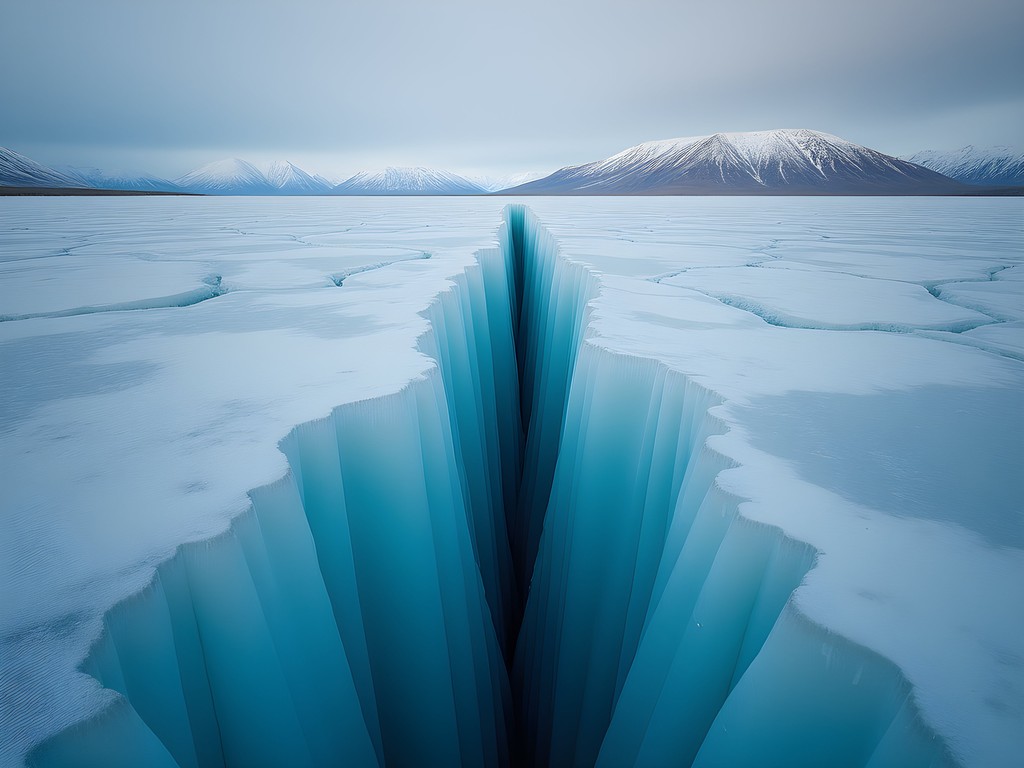
💡 Pro Tips
- Underexpose ice scenes by 2/3 to 1 stop to preserve highlight detail
- Use manual focus when shooting through ice to precisely capture subsurface details
- Pack microfiber cloths in ziplock bags to keep them dry for lens cleaning
Cultural Connections Through Your Lens
Beyond its natural splendor, Lake Baikal offers rich cultural dimensions that can elevate your photographic narrative. As someone with mixed cultural heritage myself, I'm always drawn to the human stories behind extraordinary landscapes.
The indigenous Buryat people have revered Baikal for centuries, considering it a sacred place filled with spiritual power. During my time on Olkhon Island, I was fortunate to be invited to a small ceremony near Shamanka Rock, where colorful prayer flags (called khadags) fluttered against the stark white landscape. These cultural elements can add powerful context to your ice photography—just approach with appropriate respect and always ask permission before photographing ceremonies or individuals.
The Russian communities around Baikal have their own unique relationship with the lake. In Listvyanka, I photographed local ice fishermen sitting patiently by small holes for hours in temperatures that had me retreating to warmth after just thirty minutes. Their weathered faces and traditional methods tell a story of resilience and adaptation to this extreme environment.
One of my most memorable experiences was documenting the local tradition of ice road driving. During peak winter, the lake becomes a highway connecting otherwise isolated communities. I arranged to photograph from a local UAZ (Russian off-road vehicle) as we crossed from the mainland to Olkhon Island. The driver's confidence on what looked to me like just another patch of ice was both terrifying and fascinating.
For those interested in cultural photography, I recommend a versatile zoom lens that allows you to capture both environmental portraits and closer details without constantly changing lenses in the cold. My Tamron has weathered Baikal's conditions admirably while providing the versatility needed for cultural documentation.
In the evenings, local homestays (gostinitsas) offer opportunities to photograph traditional Siberian architecture and customs. The contrast of warm, wooden interiors against the frozen landscape outside creates compelling visual stories about human adaptation to extreme environments.
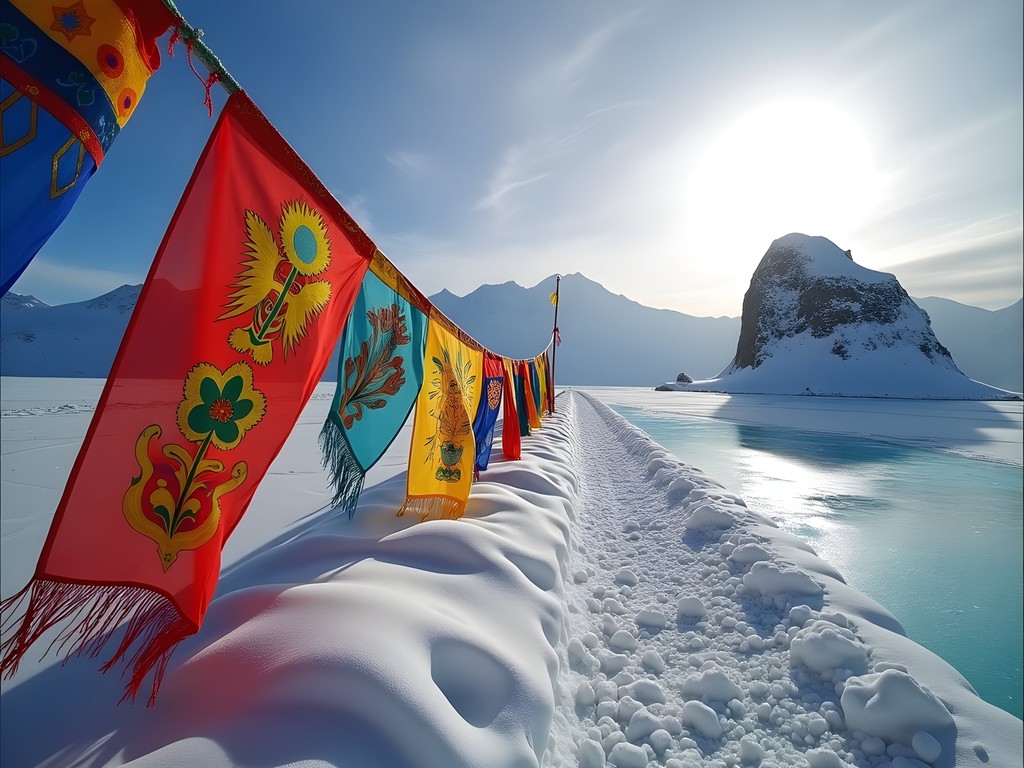
💡 Pro Tips
- Learn basic Russian phrases to connect with locals—even simple efforts are deeply appreciated
- Visit the Baikal Museum in Listvyanka to understand the lake's cultural significance before photographing
- Bring small prints from your home country as gifts for people who allow you to photograph them
Final Thoughts
As I sit writing this from my apartment in Albuquerque, surrounded by desert heat, my mind still drifts to those crystalline mornings on Baikal's ice—where each breath hung visible in the air and the lake sang its strange music as ice expanded and contracted. This frozen giant offers photographers a rare gift: landscapes that appear both alien and primordial, challenging our technical skills while rewarding our persistence with images few will ever capture firsthand. La bellezza selvaggia—wild beauty—as my mother would say. If you make this journey, go with respect for both the environment and cultures you encounter. Move slowly and deliberately across the ice, both literally and figuratively. Listen to local knowledge about safe passage. And most importantly, leave time for the unexpected moments when the lake reveals its character in ways no photography guide can predict. The images you'll create on Baikal's frozen surface will likely stand among your most treasured work—I know mine do.
✨ Key Takeaways
- Proper cold-weather preparation for both yourself and your gear is essential for successful Lake Baikal photography
- Understanding the unique light interaction with ice at different times of day dramatically improves image quality
- Specialized techniques like focus stacking and careful exposure compensation are necessary for capturing Baikal's ice formations
- Incorporating cultural elements adds depth and context to your portfolio of this remarkable landscape
📋 Practical Information
Best Time to Visit
Mid-February to early March
Budget Estimate
$2,500-4,000 USD for a 2-week trip including flights from Western Europe/US
Recommended Duration
10-14 days minimum
Difficulty Level
Challenging
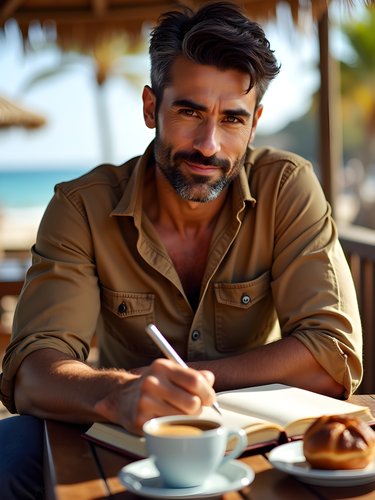

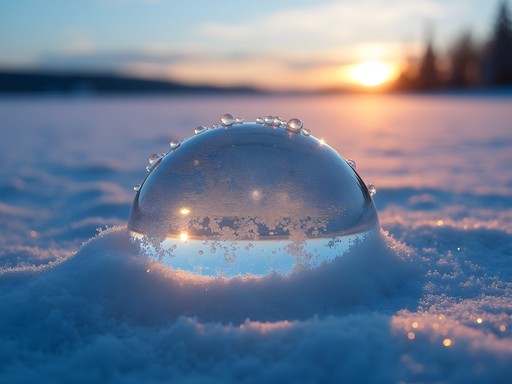
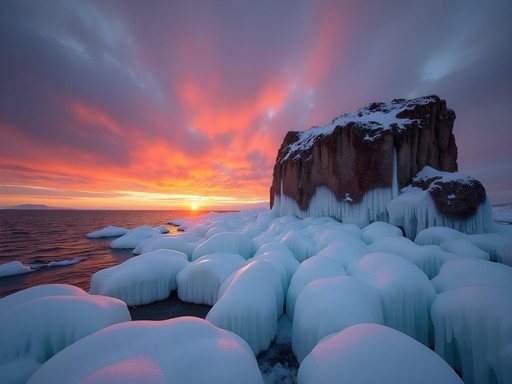
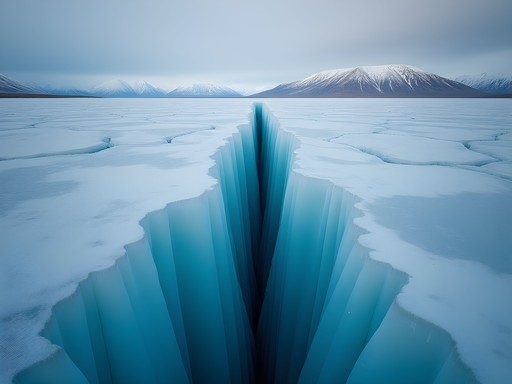











Comments
roamblogger
OH MY GOODNESS THIS IS INCREDIBLE!!! I've been dreaming of photographing Baikal for YEARS and your guide is EXACTLY what I needed!!! Those shots of the bubbles trapped in ice are UNREAL! Just booked my trip for next February and I'm literally vibrating with excitement! Did you find it difficult to move around on the ice with all your gear? I'm bringing way too much equipment as usual 😂
journeyway
The enthusiasm in this comment is contagious! Now I want to go too!
Hayden Butler
Kevin, your shots of the methane bubbles trapped in ice are phenomenal! Reminds me of my visit last year. For anyone planning a trip, I'd recommend staying in Listvyanka for a night or two but then moving to Olkhon Island for the most dramatic ice formations. The drive across the frozen lake to get there was one of the most exhilarating (and terrifying) experiences of my life! Also worth noting - the local Buryat culture adds another fascinating dimension to the trip. Don't miss trying the local omul fish, smoked right on the lakeshore. It pairs perfectly with a shot of vodka after a day shooting in -25°C temperatures!
vacationbuddy
Driving ACROSS the frozen lake?! That sounds both amazing and terrifying! How thick is the ice actually?
Hayden Butler
It's over a meter thick in winter! Locals say it can support a tank. Still feels surreal though!
globenomad
I visited Lake Baikal last winter and the photography challenges are real! My camera batteries died within 30 minutes despite keeping them in inner pockets. One tip I'd add - bring silica gel packets to combat condensation when moving between the frigid outdoors and heated buildings. Also, my hand warmers were absolute lifesavers for both my hands and camera batteries. Kevin's advice about shooting during golden hour is spot on - the light on those ice formations is pure magic around 4-5pm.
starclimber
The battery thing is so real! I lost so many shots on my Mongolia trip because of this.
globenomad
Yep, learned that lesson the hard way! Now I travel with at least 3 backup batteries in cold environments.
escapeace
Just got back from a summer trip to Baikal and now I'm planning a winter return after reading this! For anyone worried about the extreme cold, the local homestays around Olkhon Island are super cozy and the hosts know exactly what photographers need. They even arranged a driver who took me to the best ice locations at sunrise. Bring extra batteries though - mine died within minutes in that Siberian cold!
vacationpro
Any homestay recommendations? Planning to go in January.
escapeace
Check out Nikita's Homestead in Khuzhir. Basic but perfect location and they understand photographer needs. They'll wake you for sunrise and have hot tea waiting when you return frozen!
starclimber
Those ice bubble photos are insane! 😍
vacationbuddy
This looks absolutely stunning! When is the best time to visit if I want to see those amazing ice formations? And how cold does it actually get? Not sure if my regular winter gear would cut it there...
Hayden Butler
I was there last February and it was breathtaking but BRUTAL. We're talking -30°C some mornings! Your regular winter gear definitely won't be enough. I invested in a proper expedition-grade down parka and it was worth every penny. Mid-February to early March is ideal for those crystal clear ice formations Kevin captured so beautifully.
vacationbuddy
Thanks for the info! Might need to upgrade my winter wardrobe before attempting this trip!
Sarah Powell
Kevin, your guide couldn't have come at a better time! I'm planning my Lake Baikal trip for February and your section on 'The Dance of Light on Ice' has me rethinking my entire approach. I've photographed ice in Alaska and Greenland, but Baikal seems to be in a league of its own. I'm particularly intrigued by your mention of shooting at night with the stars reflecting through the clear ice. One question: did you find that a tripod with ice spikes was necessary, or were regular rubber feet sufficient on most of the lake surface? I'm debating whether to invest in ice spikes or if that's overkill for this location.
Kevin White
Thanks Sarah! Definitely get the ice spikes - regular rubber feet slip constantly, especially near shorelines or if there's any snow melt. The ice can be surprisingly slick and you don't want your gear sliding away! The night photography opportunities are absolutely worth the extra preparation.
wavephotographer4203
As someone who's photographed ice formations around the world, your technical section on ice photography is spot on. The reflections and refractions make metering tricky. I've found that spot metering on mid-tones rather than matrix metering gives more consistent results when shooting transparent ice. Also worth mentioning that circular polarizers are essential for controlling reflections on the ice surface. One thing I'd add about the locations: the northern shores near Severobaikalsk have fewer tourists but require more travel effort to reach. The ice there tends to be clearer with fewer cracks if you're after those perfect transparent shots.
oceanperson
Is February the best month to go? Planning for 2026!
Kevin White
February to early March is prime time! The ice is usually at its clearest and most stable then. Just be prepared for -20°C or colder!
sunnyzone
I visited Lake Baikal last winter and it was LIFE CHANGING! The ice bubbles are even more incredible in person. One tip I'd add - bring those stick-on hand and foot warmers because no matter how good your gloves are, your fingers will freeze when adjusting camera settings. I went through about 20 pairs in a week! The locals laughed at me but my fingers survived to take more photos 😂
Sarah Powell
Great tip about the hand warmers! Did you have any issues with condensation on your camera when going from cold to warm environments? That's always been my biggest challenge in extreme cold.
sunnyzone
Oh yes! Huge problem. I started keeping my camera in a sealed ziplock bag before bringing it inside, then let it warm up slowly. Saved my gear from moisture damage!
Venture X
Premium card with 2X miles, $300 travel credit, Priority Pass